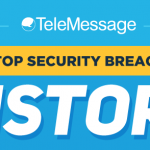One of the most important factors to ensure lone worker safety is employee monitoring. According to Berg Insight, there are over 30 million lone workers in the U.S, Canada, and the UK combined – all scattered across many sectors such as manufacturing, construction, retail, and financial services.
However, despite that, many companies are not taking steps to protect their lone workers. According to the Everbridge Mobile Safety Research Report, although field worker safety was seen as a top mobile worker safety concern, only 18% said that they require lone/field workers to regularly check in on their safety, and only 14% stated that they send out regular communications to lone/field workers to check on them.
What is a Lone Worker?
According to Safety and Health Magazine, a lone worker can be anyone who works in a fixed facility or away from his or her typical workplace without direct supervision. This means these workers are exposed to a variety of safety hazards, in addition to the risks present for all workers on a job site, as they cannot call out for help to a fellow worker in the event of an emergency.
To ensure the safety of their lone workers, it is imperative for companies to establish a check-in procedure and to provide lone workers with reliable tools that will enable them to stay in contact with their co-workers at the central office.
Check-in Procedure: Background
A check-in procedure is a method of confirming lone workers well-being and may take place on a two-hour basis. Traditionally, lone worker check-in processes require all employees to cease their work to manage a check-in periodically. Sometimes these check-ins are informal, requiring the worker to call an office-based employee, an individual who is on the field, their supervisor, or even a call center or automated phone system.
CCOHS Check-In Procedure
In Canada, the Canadian Centre for Occupational Health and Safety has established a standard for a proper check-in procedure. According to their Working Alone factsheet, a lone worker must provide the following details when traveling out of office:
- Destination.
- Estimated time of arrival.
- Return time or date.
- Contact information.
- Mode of travel (public transit, car, plane, etc.).
- Alternate plans in the event of bad weather, traffic problems, etc.
An example of a proper check-in procedure, according to CCOHS is as follows:
- Prepare a daily work plan, so it is known where the lone employee will be and when.
- Identify one main person to be the contact at the office, plus a backup.
- Define under what circumstances the lone employee will check in and how often.
- Stick to the visual check or call-in schedule. You may wish to have a written log of contact.
- Have the contact person call or visit the lone employee periodically to make sure he or she is okay.
- Pick out a code word to be used to identify or confirm that help is needed.
- Develop an emergency action plan to be followed if the lone employee does not check-in when he or she is supposed to.

Using SMS Messaging in Ensuring Lone Worker Safety
While telephone calls and visual inspections are effective, these methods are very time-consuming, unproductive, and cannot be relied on especially during accidents when the lone worker is hurt between check-in times. That is why there are now numerous software companies that have created automated software for tracking the movement of employees so that their supervisor can monitor their status in real-time.
However, companies do not have to invest in expensive systems to ensure the well-being of their lone workers. Through a secured messaging platform such as TeleMessage, lone workers can quickly check-in via SMS before they travel or work on their own. If they do not respond to the system’s auto-generated check-in messages with their PIN when they should, it escalates the alarm to their designated emergency contacts.
Aside from SMS, TeleMessage also supports other channels such as voice messages, IP messages, email, chats, etc. It also has time-critical features such as group messaging, message delivery and tracking, pop-ups, reminders and message escalation across devices.
TeleMessage’s Secure Text Messaging platform ensures the highest delivery percentage of mission-critical traffic. With our SMS failover option for IP Push Notification messages, lone workers will be able to deliver critical information even without an active Internet connection.
To learn more about our Secure Enterprise Messaging Platform, visit our website today at www.telemessage.com





